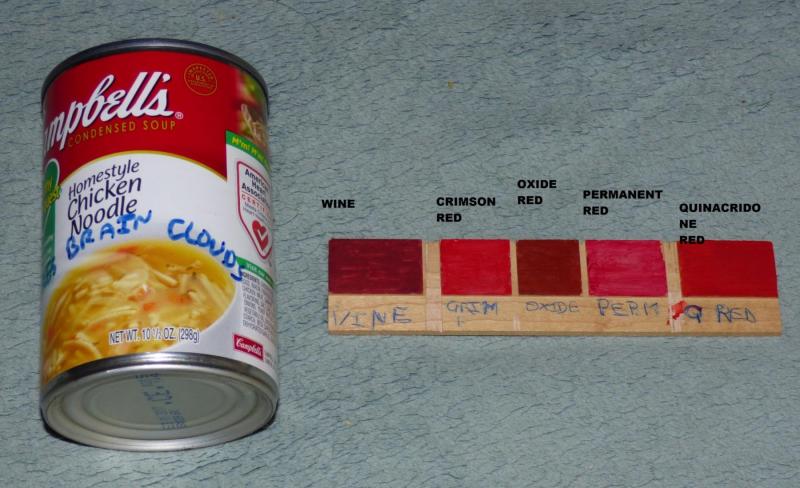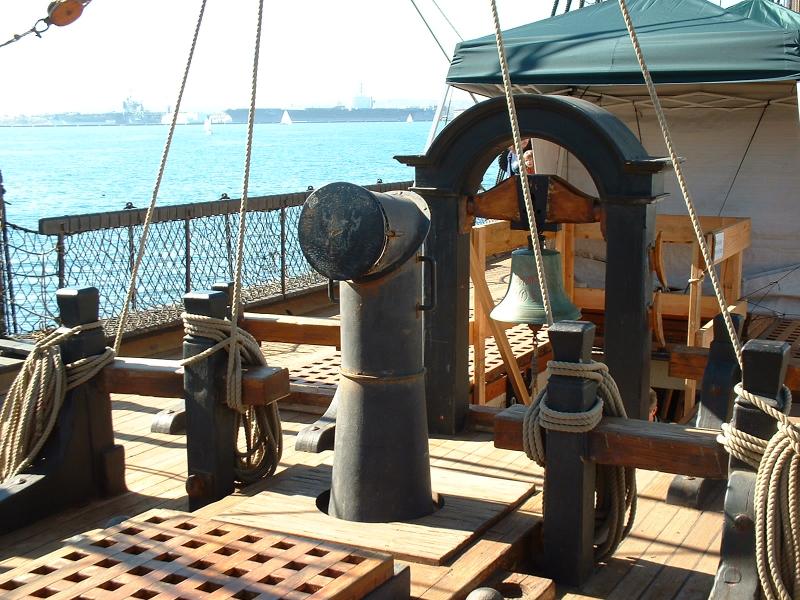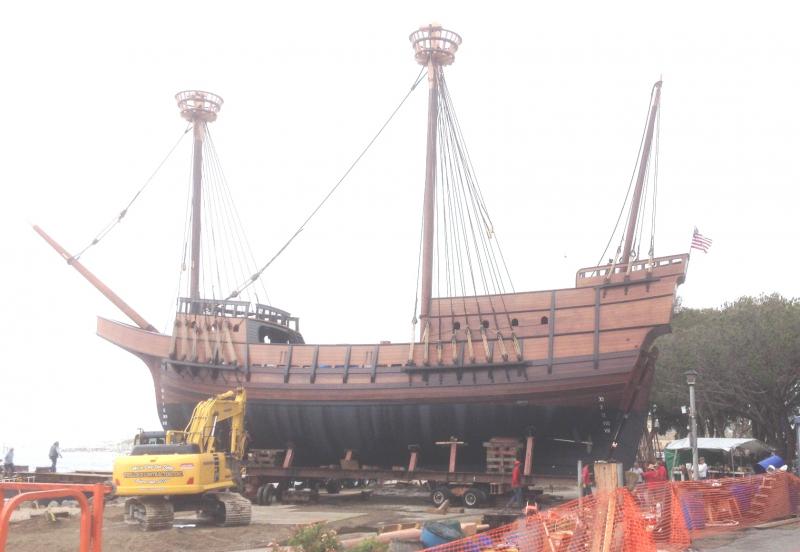-
Posts
1,876 -
Joined
-
Last visited
Content Type
Profiles
Forums
Gallery
Events
Everything posted by Chuck Seiler
-

Red Paint or Red Ochre
Chuck Seiler replied to davyboy's topic in Painting, finishing and weathering products and techniques
Carefully. One possible way would be to install some pre-painted 1/64" thick fillers. -

Red Paint or Red Ochre
Chuck Seiler replied to davyboy's topic in Painting, finishing and weathering products and techniques
How does it compare to the hues in post 18? -

Wood masts for a plastic model... Tips?
Chuck Seiler replied to SomethingIsFishy's topic in Plastic model kits
Oh yes, so he did...back in post #6. When he stated that he 'checked his kit' I was envisioning him opening the box that has been on his bedside cabinet for 10 years. I have some that have been sitting around AT LEAST that long. Just sayin'. -

Red Paint or Red Ochre
Chuck Seiler replied to davyboy's topic in Painting, finishing and weathering products and techniques
Understood. What I am trying to determine is, which (if any) of the colors/hues I posted would be reasonably good for use on a model of a late 18th century Continental warship? ....or should I continue to experiment? -

Wood masts for a plastic model... Tips?
Chuck Seiler replied to SomethingIsFishy's topic in Plastic model kits
Is it constructed or still in the box? -

Red Paint or Red Ochre
Chuck Seiler replied to davyboy's topic in Painting, finishing and weathering products and techniques
True. I used the term acrylic red to differentiate between oil, acrylic or water color. There are a significant number of hues within the 'red' range based on what they were made with. These are further expanded with mixing and shading. -

Red Paint or Red Ochre
Chuck Seiler replied to davyboy's topic in Painting, finishing and weathering products and techniques
He uses Crimson Red. The second from the left on my plate #2. -

Red Paint or Red Ochre
Chuck Seiler replied to davyboy's topic in Painting, finishing and weathering products and techniques
The other option is when you make a custom color, make a whole lot of it. <then, of course, it sits in the container and gets all dried out..... :-( > I guess I was supposed to use -

Wood masts for a plastic model... Tips?
Chuck Seiler replied to SomethingIsFishy's topic in Plastic model kits
The answer to your question will depend on what your experience with woodworking is and what equipment you have to work with. Making a mast and yards from square stock may be the best answer, but may not be practical for you. Another option might be to use something to reinforce the existing mast. If the mast is hollow, try brass tubing for the inside. -

Red Paint or Red Ochre
Chuck Seiler replied to davyboy's topic in Painting, finishing and weathering products and techniques
I have to say that I have been interested in getting 'the right red' almost to the point of obsession for several years. I looked at different woods, different dyes, etc. This is an extension of that. It also explains why I have seemingly alot of reds laying around. Shortly after Joel posted his color swatches above, I got with him IM and discussed different reds. It prompted my to develop my own swatches, which I took to the NRG conference. Unfortunately, I did not take the opportunity to discuss wit may people. One thing did get from Joel was to post a common item, like a can of soup, so differences in monitors, etc, can be gauged. Plate 1 consists of some colors I was playing with (upper) as well as combinations. CABOOSE RED is obviously not close to red ochre, but it was a possible option for bulkheads and gun carriages. Plate 2 consists of plain reds I had. WINE and PERMANENT RED are not very appealing to me. Thoughts and comments? -
It looks like the bells they had in the old California missions.
- 1,449 replies
-

Some criteria for starting a new group project
Chuck Seiler replied to Chuck's topic in Group Projects on Model Ship World
Count me in! -

Some criteria for starting a new group project
Chuck Seiler replied to Chuck's topic in Group Projects on Model Ship World
Chuck, Will we get the carving blanks thru SYREN or thru NRG? -

Wales
Chuck Seiler replied to -Dallen's topic in Building, Framing, Planking and plating a ships hull and deck
Dealing mostly with 18th century ships, but also having worked on a 1607 vintage ship model, I got some insight on wales. I am sure there are more knowledgable people on the subject, but I will add my 2 quid. One function of the wale is to hold the frames together...sort of like barrel hoops. I am not sure if that is the intended function, but as a major structural part, that's what it does. What I believe to be the primary function, is to provide structural "meat" to support other parts of the ship. In the 18th century, this was to support the deck structures, such as the clamps, knees, etc. In earlier years, the frames were much different. Then, the futtocks were NOT bolted to each other. Rather, they were bolted to a wale where the two futtocks overlapped. That is why you see several narrower wales on ships like the Santa Maria or same era ships. ...and, yes, from what I could tell from the plans, there were wales below the waterline. -
Great timing. I was going through some pictures of SURPRISE and found a shot of the galley smoke stack (Charlie Noble).
- 1,449 replies
-

Red Paint or Red Ochre
Chuck Seiler replied to davyboy's topic in Painting, finishing and weathering products and techniques
Gadzooks! Checking the various hues online I find there is alot of paint out there. Monitor color does not reflect true color however. I may need to head down to Dick Blick, who has MANY different brands, and check out the swatches. Is anybody going to be talking 'color' at the upcoming NRG conference? None on the schedule, but maybe in a round table. -

Red Paint or Red Ochre
Chuck Seiler replied to davyboy's topic in Painting, finishing and weathering products and techniques
I have tried Crimson, but am not wild about it. Cadmium Red and a little Burnt Sienna. I am on track but need to work on it. I recently got Iron Oxide Red I will experiment with in conjunction with the others. The problem may be that I am shooting for a barn red look, when that may NOT be what I want. The red cliffs of non-Dover (above) seem to have more yellow. -

Red Paint or Red Ochre
Chuck Seiler replied to davyboy's topic in Painting, finishing and weathering products and techniques
Does anybody have a good formula for replicating red ochre? I am experimenting with various hues of acrylic red to find a shade I like. So far, I am close but not on target. -
After having spoken from memory, I checked my sources and found that there is also the half breath plan. At any rate, here is a better discussion of the lines using SULTANA as a reference. http://modelshipworldforum.com/resources/plans_and_research/InterpretingLineDrawings.pdf I only used waterlines to create a hull once (with success). I have used the station lines several times to make bulkheads...using them to make a hull. Starting the model is easy. Finishing it is...
-
CA, I had similar experience as you with the hull block. After I screwed it up the first time, I decided to make the hull using the bread and butter method using lifts based on the horizontal waterlines from the body/sheer plan. It turned out to be much easier than trying to sculpt the single block of wood.
-
It is the "SAN SALVADOR" from the San Diego Maritime Museum. Below i a picture after construction but before commissioning. Here is a link to the site. https://sdmaritime.org/visit/the-ships/san-salvador/
- 27 replies
-
- san salvador
- maritime museum
-
(and 1 more)
Tagged with:
-
I found that padauk wood also makes a reasonably good brick. I used it on my scratch PHILADELPHIA for the hearth.
- 504 replies
-
- washington
- galley
-
(and 1 more)
Tagged with:
-

HMS Sophie
Chuck Seiler replied to ivica70's topic in CAD and 3D Modelling/Drafting Plans with Software
That's about right. They were not all that roomy and the folks were smaller then. Movie and TV depictions are bad examples because they often build the sets overly large to accommodate the film crews, cameras and comfort of the actors. IIRC, the BOUNTY used for the 1960s movie was 1.5 times the size of the real BOUNTY. That is also the reason why, unlike the army, the British navy never stands when they make a toast. Tradition. Back in the day, if you stood in the wardroom or great cabin, you may end up whackin' your head on some beam or overhead object. -

HMS Sophie
Chuck Seiler replied to ivica70's topic in CAD and 3D Modelling/Drafting Plans with Software
The whole gundeck area.
About us
Modelshipworld - Advancing Ship Modeling through Research
SSL Secured
Your security is important for us so this Website is SSL-Secured
NRG Mailing Address
Nautical Research Guild
237 South Lincoln Street
Westmont IL, 60559-1917
Model Ship World ® and the MSW logo are Registered Trademarks, and belong to the Nautical Research Guild (United States Patent and Trademark Office: No. 6,929,264 & No. 6,929,274, registered Dec. 20, 2022)
Helpful Links
About the NRG
If you enjoy building ship models that are historically accurate as well as beautiful, then The Nautical Research Guild (NRG) is just right for you.
The Guild is a non-profit educational organization whose mission is to “Advance Ship Modeling Through Research”. We provide support to our members in their efforts to raise the quality of their model ships.
The Nautical Research Guild has published our world-renowned quarterly magazine, The Nautical Research Journal, since 1955. The pages of the Journal are full of articles by accomplished ship modelers who show you how they create those exquisite details on their models, and by maritime historians who show you the correct details to build. The Journal is available in both print and digital editions. Go to the NRG web site (www.thenrg.org) to download a complimentary digital copy of the Journal. The NRG also publishes plan sets, books and compilations of back issues of the Journal and the former Ships in Scale and Model Ship Builder magazines.





